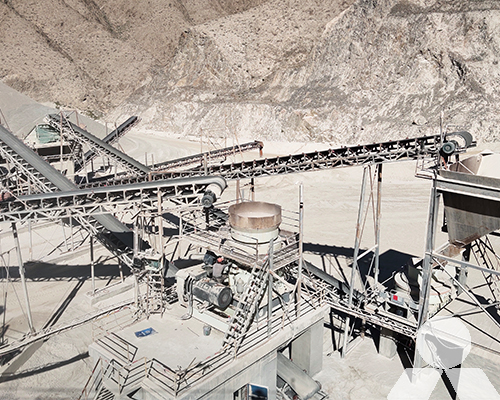Aggregate Crushing and Screening Plant Layout
Aggregate crushing and screening plants are used to process raw materials, such as rock, gravel, and sand, into the desired size and shape for use in construction. The layout of an aggregate crushing and screening plant is important to ensure efficient and effective operation.
The layout of an aggregate crushing and screening plant should be designed to:
- Minimize material handling
- Maximize productivity
- Minimize environmental impact
The plant layout should also be designed to accommodate the specific needs of the project. For example, a plant that will be used to produce large quantities of aggregate for a highway construction project will require a different layout than a plant that will be used to produce small quantities of aggregate for a residential construction project.

Typical Aggregate Crushing and Screening Plant Layout
A typical aggregate crushing and screening plant layout consists of the following components:
- Feeder: The feeder is used to deliver the raw material to the crusher.
- Crusher: The crusher is used to reduce the size of the raw material.
- Screen: The screen is used to separate the crushed material into different sizes.
- Storage: The storage area is used to store the finished aggregate.
Feeder Layout
The feeder layout is important to ensure that the raw material is delivered to the crusher in a controlled manner. There are two main types of feeders used in aggregate crushing and screening plants:
- Belt feeder: Belt feeders are the most common type of feeder used in aggregate crushing and screening plants. They are relatively inexpensive and easy to maintain.
- Vibrating feeder: Vibrating feeders are used to deliver material at a higher rate than belt feeders. They are more expensive than belt feeders, but they can increase productivity.
Crusher Layout
There are several different types of crushers used in aggregate crushing and screening plants, each with its own advantages and disadvantages. The most common types of crushers include:
- Jaw crusher: Jaw crusher are the most basic type of crusher. They are relatively inexpensive and easy to maintain.
- Impact crusher: Impact crusher are used to produce a more uniform product than jaw crushers. They are more expensive than jaw crushers, but they can increase productivity.
- Roller crusher: Roller crushers are used to produce a very fine product. They are more expensive than jaw or impact crushers, but they can be used to produce a variety of aggregate sizes.
Screen Layout
The screen layout is important to ensure that the crushed material is separated into the desired sizes. There are several different types of screens used in aggregate crushing and screening plants, each with its own advantages and disadvantages. The most common types of screens include:
- Vibrating screen: Vibrating screen are the most common type of screen used in aggregate crushing and screening plants. They are relatively inexpensive and easy to maintain.
- Trommel screen: Trommel screens are used to produce a more uniform product than vibrating screens. They are more expensive than vibrating screens, but they can increase productivity.
- Rotary screen: Rotary screens are used to produce a very fine product. They are more expensive than vibrating or trommel screens, but they can be used to produce a variety of aggregate sizes.
Storage Layout
The storage layout is important to ensure that the finished aggregate is stored in a safe and efficient manner. The most common type of storage for aggregate is a pile. Piles can be either open or covered. Open piles are less expensive to construct, but they are more susceptible to contamination. Covered piles are more expensive to construct, but they can help to protect the aggregate from contamination.
The layout of an aggregate crushing and screening plant is an important factor to consider when designing a plant. The layout should be designed to minimize material handling, maximize productivity, and minimize environmental impact.









